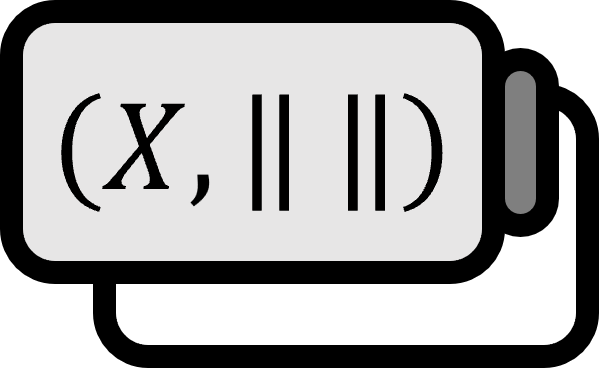Infinite-Dimensional Vector Spaces and Schauder Bases
Definition1
Let’s call $(X, \left\| \cdot \right\|)$ a normed space. If there exists a unique sequence of scalars $\left\{ a_{k} \right\}_{k \in \mathbb{N}}$ that satisfies the following for every element $\mathbf{x}\in X$ in $X$, then $\left\{ \mathbf{e}_{k} \right\}_{k \in \mathbb{N}} \subset X$ is called the Schauder basis of $X$.
$$ \mathbf{x}= \sum_{k \in \mathbb{N}} a_{k} \mathbf{e}_{k} $$
Description
The basis of a vector space is called the Schauder basis, especially when discussing ‘infinite’ linear combinations. Since it deals with infinity, it is closely related to properties of Banach spaces, and especially for Hilbert spaces, the following useful theorem is known.
Equivalent Conditions for an Orthonormal Basis: Let’s say $H$ is a Hilbert space. For the orthonormal system $\left\{ \mathbf{e}_{k} \right\}_{k \in \mathbb{N}} \subset H$ of $H$, the following are all equivalent.
- (i): $\left\{ \mathbf{e}_{k} \right\}_{k \in \mathbb{N}} \subset H$ is an orthonormal basis of $H$.
- (ii): For all $\mathbf{x}\in H$, $$ \mathbf{x}= \sum_{k \in \mathbb{N}} \langle \mathbf{x}, \mathbf{e}_{k} \rangle \mathbf{e}_{k} $$
- (iii): For all $\mathbf{x}, \mathbf{y} \in H$, $$ \langle \mathbf{x}, \mathbf{y} \rangle = \sum_{k \in \mathbb{N}} \langle \mathbf{x}, \mathbf{e}_{k} \rangle \langle \mathbf{e}_{k} , \mathbf{y} \rangle $$
- (iv): For all $\mathbf{x}\in H$, $$ \sum_{k \in \mathbb{N}} \left| \langle \mathbf{x}, \mathbf{e}_{k} \rangle \right|^{2} = \left\| \mathbf{x}\right\|^{2} $$
- (v): $\overline{\text{span}} \left\{ \mathbf{e}_{k} \right\}_{k \in \mathbb{N}} = H$
- (vi): If $\mathbf{x}\in H$ and for all $k \in \mathbb{N}$, $\langle \mathbf{x}, \mathbf{e}_{k} \rangle = 0$ implies $\mathbf{x}= \mathbf{0}$
See also
Ole Christensen, Functions, Spaces, and Expansions: Mathematical Tools in Physics and Engineering (2010), p42 ↩︎
